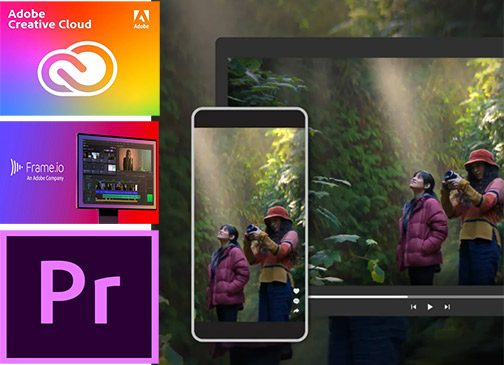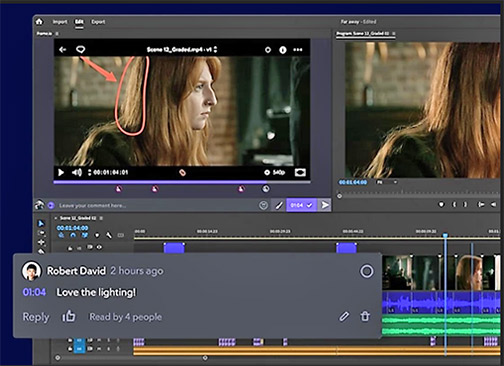
San Jose, CA—Adobe announced its video–editing and collaboration tools were the most popular with Sundance Film Festival filmmakers—for the fifth year in a row. This year’s annual Sundance Institute survey found that more two-thirds (67%) of Sundance films used Adobe video tools to bring stories to life.
The tools included Premiere Pro and Frame.io. Moreover, Premiere Pro was the festival’s most popular video–editing software. It was used by more than half of Sundance films, including Plan C, Going Varsity in Mariachi, Sometimes I Think About Dying and Fremont.
“We’ve always been proud of our Daily Recaps. With Adobe’s video cloud workflow, it allowed our teams to gather content from the far corners of our event to collaboratively turn around a compelling piece of content the next morning, capturing the excitement and amplifying the moment,” said Holden Payne, technical director of Exhibition for the Sundance Film Festival.

“This improved workflow loosened the pressure on our creative and editorial teams and allowed them to put great content on the screen.”
Adobe Video Tools at Sundance
In addition to Premiere Pro and Frame.io, other Adobe Creative Cloud tools used at the festival were After Effects, Photoshop and the Substance 3D Collection. In fact, they were used in making nearly three-quarters of the 2023 films.
Since the pandemic, hybrid filmmaking is now the norm, making remote collaboration critically important. Consequently, the addition of Frame.io to Creative Cloud allowed Sundance Film Festival storytellers with cloud technologies to shoot, cut and review footage alongside anyone, anywhere in the world.
“I’ve been using Frame.io since 2018. Since then, it’s been a game changer for me to be able to collaborate in the cloud with producers during postproduction,” said Daniela I. Quiroz, editor of Going Varsity in Mariachi.
“Its integration with Premiere Pro has made the editing process so much more efficient. It allows me to get more work done in a shorter amount of time using Adobe Premiere Pro and Creative Cloud.”
Sundance Institute Adopts Adobe Cloud Workflows
What’s more, the Sundance Institute used Adobe’s video cloud workflows for its social media channels. It utilized Camera to Cloud, Premiere Pro and After Effects to create the Festival Daily Recap and videos.
Adobe’s cloud-based workflows are built to save time and money. The goal is to enable filmmakers and video creators to bring timely and inspiring stories to life, even when crews and editors are working at multiple locations.
Publishing content during live events requires fast turnarounds and streamlined workflows. Camera to Cloud eliminates the need to download media and transport hard drives. Thus, media transfer is near-instantaneous.
In addition, Adobe media replacement Motion Graphics templates simplify the addition of professional animations. Further, Adobe Sensei AI features reduce repetitive tasks. As a result, together with Frame.io, editorial teams can start cutting sooner.
Camera to Cloud
In related news, Adobe announced that at the most recent Adobe MAX, it previewed an industry first. It unveiled Camera to Cloud integration built into RED Digital Cinema’s V-Raptor and V-Raptor XL camera systems. 
Available now, this integration enables footage to transfer from on-set cameras to cloud-based Frame.io folders without intermediate devices. As a result, postproduction teams located anywhere can start work on the footage immediately.
Now used globally by more than 6,000 productions, Adobe’s Camera to Cloud technology (powered by Frame.io) furthered the transition from external drives to cloud-based camera workflows. Moreover, Adobe believes this new in-camera evolution will become a standard within the next decade, enabling fully cloud-powered filmmaking.





